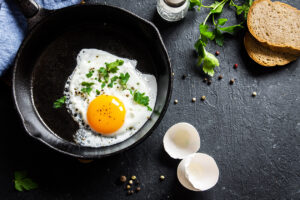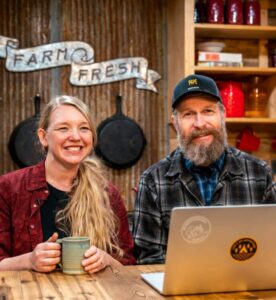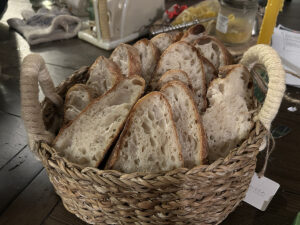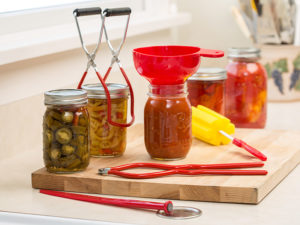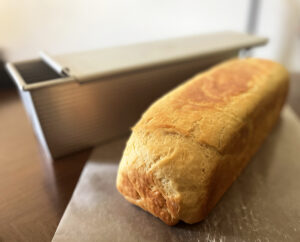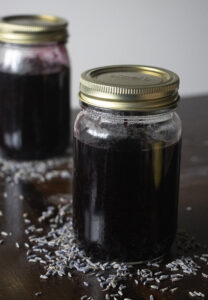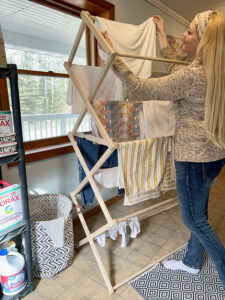Our organic gardener, Karen Geiser, is sharing this recipe during her frequent seminars at Lehman’s in Kidron, Ohio. For those of you who might not be able to make it to the store, here’s her easy recipe for flavorful fermented sauerkraut. If you’ve been curious about fermented foods, but aren’t sure where to start, this is the ideal recipe for you!
This recipe first appeared as part of a larger piece in Country Life on Sept. 22, 2011. The entire article is available in our archives.
Ingredients
One medium head cabbage
1 Tbsp salt (use non-iodized salt like sea salt, kosher, Real or Himalayan pink)

Shred cabbage and mix with salt in a large bowl. Pound with wooden mallet or your hands to release juices. Volume will be greatly reduced after pounding. Pack cabbage tightly into wide-mouth jar till juices cover the cabbage. Leave at least 1-1/2 inches head space.
Place a cabbage leaf on top to prevent shredded cabbage from floating in the liquid.
Fill a new, clean plastic bag with water, close with twist tie and place in mouth of jar to seal off air. Store in dark conditions (wrap jar in a dish towel) at room temperature for 3-4 days or until bubbling ceases.
Remove bag and check liquid level. Add water to cover if needed. Put on a plastic lid and transfer to cold storage. Full flavor develops in about 6 weeks and it will keep for several months. Recipe is for one quart jar. Multiply as needed for half gallon or gallon jar:
Although the kraut can be canned at this point, canning the kraut will destroy the raw enzymes and beneficial bacteria present in the fermented kraut.
Lacto-fermentation is an age-old process where naturally occurring lactic acid bacteria produce lactic acid to help preserve foods. These bacteria are anaerobic: they thrive in an oxygen-free environment and make the food more nutritious and easy to digest. Among other health benefits, lactic acid stimulates digestive organs and provides friendly bacteria to the colon which benefits our immune systems and overall health.
To learn more about lacto-fermentation:Â
Making Sauerkraut and Pickled Vegetables by Klaus Kauffmann and Annaliese Schoneck
Nourishing Traditions by Sally Fallon
Wild Fermentation and The Art of Fermentation by Sandor Katz




